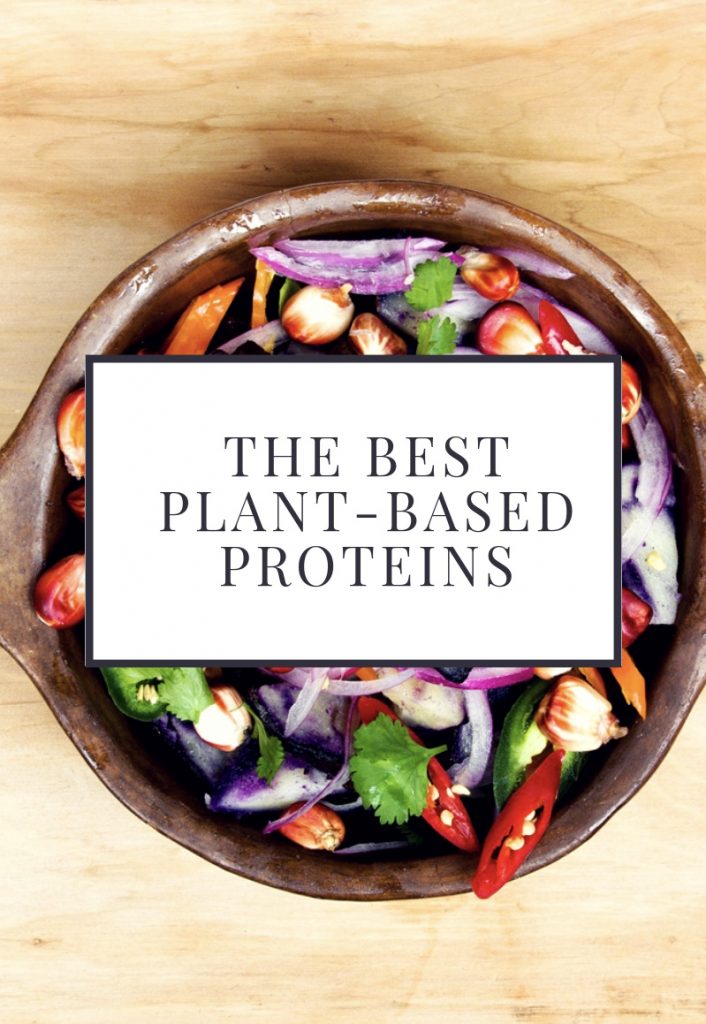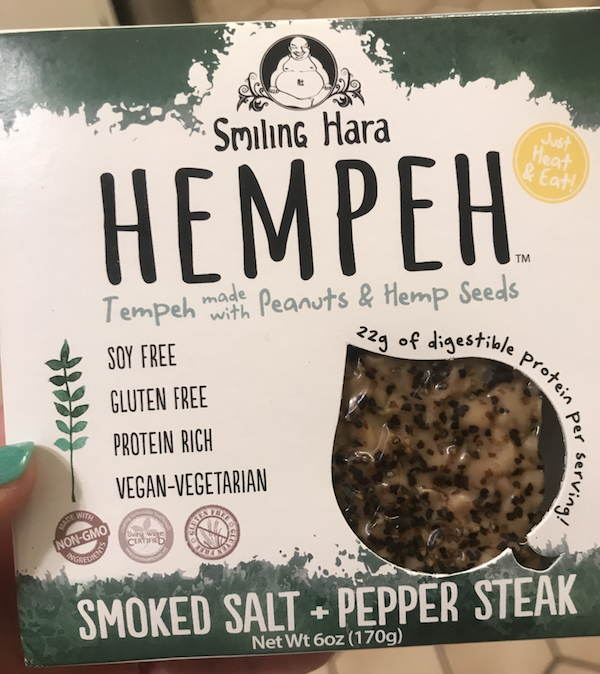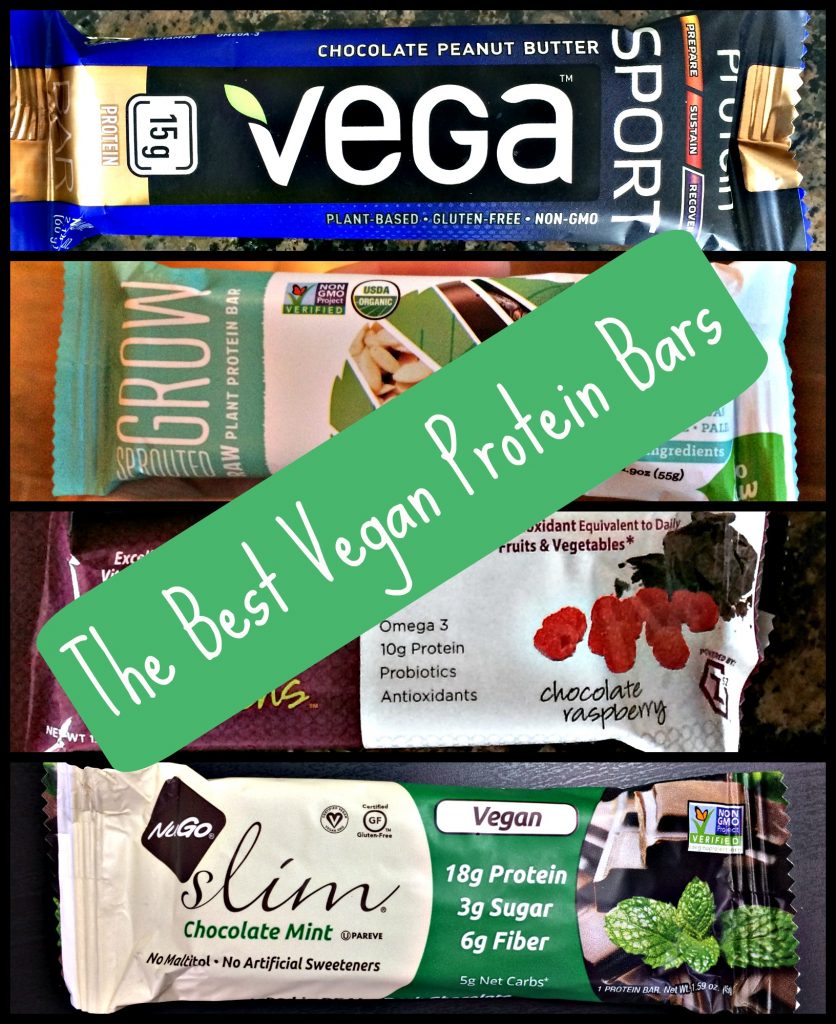
Sign-up for our 2020 Vegan January Challenge!
Whether you’ve been a vegan for decades or just starting to dabble with a plant-based diet, one of the most common things you’ll be asked is “how do you get enough protein?!” Many people assume that without meat, your muscles will wither away or that “vegan protein” equals gross “veggie” burgers and frankenfood.
While we don’t believe that there is one perfect diet or way of eating for everyone, we are here to make sure that you are getting the right amount of nutrients and fuel your body in the best way possible.
So plant-based people, we give you permission the laugh in the face of anyone else who says you can’t possibly get enough protein following a vegan diet. And then immediately enlighten them with this article.
The real challenge is not that there’s limited sources of plant proteins (because trust us, there are plenty!) but understanding which options give you the most bang for your protein buck and how to prepare them. We’ve included a few recipes and cooking tips that’ll please your palate and won’t freak your family out.
Seitan
 Also known as “wheat meat,” Seitan is a great meat alternative for those who don’t have gluten intolerances or Celiac Disease. Seitan takes on a similar texture to meat when cooked which makes it a great alternative for meat in virtually any recipe. To make things more interesting, throw it on the grill and serve it with chimchurri sauce (because chimichurri makes everything delicious) or use your seitan to spice up taco night.
Also known as “wheat meat,” Seitan is a great meat alternative for those who don’t have gluten intolerances or Celiac Disease. Seitan takes on a similar texture to meat when cooked which makes it a great alternative for meat in virtually any recipe. To make things more interesting, throw it on the grill and serve it with chimchurri sauce (because chimichurri makes everything delicious) or use your seitan to spice up taco night.
Nutrition Panel (per 1 ounce): 1 grams protein, 4 grams carbohydrate, <1 gram fat. It’s also a good source of selenium and iron!
Tempeh
Derived from fermented soybeans, Tempeh has become a popular meat alternative for all eaters due to it’s boastful flavor and nutrition profiles.
After cooking, tempeh takes on a nutty, seedy flavor and a pleasantly chewy texture. You can marinate it, slice it, dice it, and crumble it anyway your heart desires, then toss it into pasta dishes as meatballs, saute it into a breakfast hash, or add it to a crockpot for vegan chili.
Nutrition Panel (per 3 ounces): 5 grams protein, 9 grams carbohydrate, 9 grams fat. Tempeh is also a great source of fiber and calcium. 1 cup has 66% of the calcium found in a cup of cow’s milk.
Tofu
Tofu has gotten a bad rap over the years for being bland and tasteless. However, this versatile soy protein has the ability to take up any sweet, spicy, or savory flavor it’s being prepared with. 1 cup of firm tofu has 20 grams of protein, equivalent to about 3 ounces grilled chicken, making it a great swap for vegetarians and vegans.
Wondering where to start with tofu? Try tossing it with veggies in a stir-fry or miso soup.
Nutrition Panel (per ½ cup firm tofu): 10 grams protein, 2 grams carbohydrate, 6 grams fat.
Chickpea Pasta
Swap out traditional pasta for Banza, which is made from chickpeas. Each serving has 3x more protein and fiber than white noodles. Try this protein-packed Thai Peanut Pasta Salad.
Want some variety? There are also protein packed pastas made from edamame, red lentils, and black beans.
Nutrition panel varies per pasta.
Hemp Seeds
 Though technically a nut, hemp seeds can add a nutritious punch to any smoothie, sauce, dip, or dish! Not only are they considered a complete protein source with roughly 11 grams per 2 tablespoons, but they’re also a good source of omega-3 fatty acids and fiber. Added bonus: there is evidence that these tiny seeds can help prevent heart disease!
Though technically a nut, hemp seeds can add a nutritious punch to any smoothie, sauce, dip, or dish! Not only are they considered a complete protein source with roughly 11 grams per 2 tablespoons, but they’re also a good source of omega-3 fatty acids and fiber. Added bonus: there is evidence that these tiny seeds can help prevent heart disease!
Unsure how to start adding hemp to your diet? Try bringing this hemp guacamole dip with bean chips or pesto pasta salad to your next office or neighborhood potluck. If you’re crunched for time but craving a crunch, mix hemp in a smoothie, and sprinkle on yogurt or oatmeal.
If you’ve got a Whole Foods or another natural foods store around you, you can also find Hempeh, which is tempeh reinforced with peanuts and hemp seeds (and delicious and filling).
Nutrition Panel (per 1 ounce): 11 grams protein, 2 grams carbohydrate 13.5 grams fat.
Beans & Legumes
From lentils and chickpeas to kidney and navy beans (and all beans in-bean-tween!), legumes are a low-cost, minimal effort way to add protein to just about any plant-based dish.
Keep it simple and low maintenance by mixing lentils into salads, stuffing pinto beans into tacos or burrito bowls, roasting and seasoning chickpeas, or sprinkling black beans on a flatbread. Peanuts count as a legume, too!
Nutrition Panel Black Beans (per ¼ cup): 10 grams protein 39 grams carbohydrates, 0 grams fat.
Nutrition Panel Cooked Lentils (per 1/2 cup): 10 grams protein, 20 grams carbohydrate, 0 grams fat.
Quinoa
 Once considered sacred by the Inca culture, quinoa is an excellent plant-based protein that can substitute for rice or pasta. Unlike any other grain, quinoa is considered a complete protein source. This means it is made up of all of the essential amino acids we need. Most grain products lack the amino acid lysine.
Once considered sacred by the Inca culture, quinoa is an excellent plant-based protein that can substitute for rice or pasta. Unlike any other grain, quinoa is considered a complete protein source. This means it is made up of all of the essential amino acids we need. Most grain products lack the amino acid lysine.
Quinoa is naturally gluten-free. Pre-cooked or soaked quinoa can be prepared on the stove top in under 15 minutes using water or low-sodium broth. Add a scoop to a summer salad, cook it for breakfast as a substitute for traditional oats, or bake into pizza quinoa bites as an after school snack (swapping mozzarella cheese for cashew cheese if you’re going full vegan!)
Nutrition Panel (per 1 cup): 8 grams protein, 39 grams carbohydrate, 4 grams fat. Bonus- quinoa packs a whopping 5g of fiber per cup to help fill you up and keep you full!
Edamame
With 17-18 grams of protein per cup, edamame is a green, nutritious soybean that takes any dish up a notch. It can be served as a crowd-pleasing appetizer when seasoned and roasted or a quick snack when steamed. Edamame can be purchased in the pods or shelled, and served in either form. Edamame beans also make a great additions to salads, Buddha Bowls and Pho.
Not sure how or where to buy edamame? Check your grocery store’s freezer section or snack aisle for dry-roasted, pre-packaged snacks.
Nutrition Panel (per 1 cup cooked): 17 grams protein, 15 grams carbohydrate, 8 grams fat.
Chia Seeds
Tiny but mighty, chia seeds are an easy way to sprinkle some nutrition into any meal. Not only do chia seeds contain 4 grams of protein per ounce, they also are great sources of omega-3 fatty acids, antioxidants and fiber.
Chia seeds are great as toppings for high protein avocado toast and acai bowls. You can also sneak them into kids’ diets by pretending like they’re sprinkles, or baking them into granola bars, muffins, protein pancakes, and bread.
Nutrition panel (per 1 tbsp): 3 grams protein, 5 grams carbohydrate, 4.5 grams fat
Spirulina
Don’t let the fact that spirulina is an algae deter you- spirulina is a deep green superfood that manages to pack 4 grams of protein in a single tablespoon! In fact, protein takes up 60-70% of spirulina’s dry weight. While there is some indication that spirulina can help improve overall health, there is not enough solid evidence to prove its clinical use. However- it sure adds a variety of vitamins and minerals to smoothie bowls.
Nutrition Panel (per 1 tablespoon): 4 grams protein, 2 grams carbohydrate, <1 gram fat.
Nutritional Yeast
Nutritious, gluten-free, and delicious, nutritional yeast makes a great alternative for dairy products in virtually any cheesy recipe. It also is an easy way for vegans to consume adequate amounts of Vitamin B-12 (if fortified), which is crucial for DNA synthesis and red blood cell formation.
Simple ways to include nutritional yeast include sprinkling some on warm popcorn or sautéed greens like kale or spinach. If you have some time to get creative in the kitchen, experiment with nutritional yeast in these vegan breakfast nachos or cauliflower risotto.
Nutrition Panel (per 2 tablespoons): 8 grams protein, 5 grams carbohydrate, 1 gram fat.
Vegan Protein Powder, Bars, and Shakes
 Protein powder is a simple solution for meals and snacks that are lacking protein. Choose brands that provide at least 20 grams of protein per serving, contain little to no added ingredients, and no artificial sweeteners like sucralose.
Protein powder is a simple solution for meals and snacks that are lacking protein. Choose brands that provide at least 20 grams of protein per serving, contain little to no added ingredients, and no artificial sweeteners like sucralose.
If you’ve tried vegan protein powders and haven’t enjoyed them, we’ve got you covered. We tried about a billion different protein powders and wrote about the best ones here (scroll down to plant-based powders to see our favorites). Trust me, we don’t like things that taste like dirt either.
You can put your protein powder in a shake, smoothie bowl, or add it to baked goods and snacks (like these peanut butter energy bites or no-bake fudge bars).
Click here for a list of our recommended vegan protein bars.
You can also opt for ready to drink protein shakes like Svelte, Orgain, Evolve, or Rebbl. Click here for our recommended list of ready to drink plant based shakes.
Written by Kait Richardson, RDN, LD and Megan Ware, RDN, LD. Read more about our dietitians here.
Sign-up for our 2020 Vegan January Challenge!
If you want more individualized help transitioning to a plant-based diet or making sure that you are getting all the right nutrients, book an initial consultation with one of our registered dietitians.
Kait Richardson is a registered dietitian nutritionist in Orlando, FL. She is a partner at a private practice, Nutrition Awareness, where she helps frustrated yo-yo dieters reach their health goals using 1:1 nutrition coaching. She is the co-host of the Nutrition Awareness Podcast.
